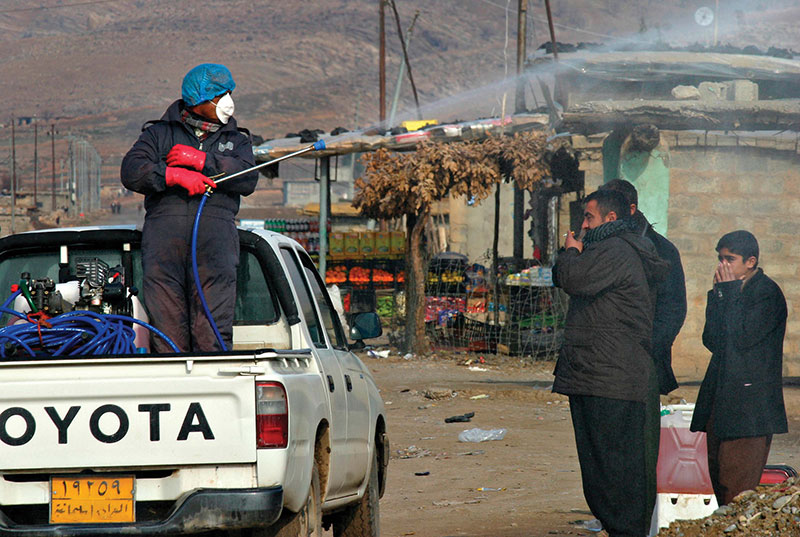Avian influenza, also called bird flu, is an infectious disease of birds that is occasionally transmitted to other animals, including human beings. The disease is caused by the type A influenza virus. Waterfowl, including wild ducks, seabirds, and shorebirds, naturally carry this virus but generally do not develop the disease itself. Infected domestic birds, such as chickens, turkeys, and ducks, are likely to develop a rapidly fatal form of the disease. A number of human beings have also died of avian influenza.

Symptoms and transmission
In birds,
symptoms of harmful bird flu infection include difficulty breathing, loss of appetite, discolored skin, uncoordinated movements, misshapen eggs, and diarrhea. The virus spreads through waste matter from infected birds and through contaminated water, feed, and equipment such as cages and the trucks used to transport birds. Vaccination helps reduce symptoms of the illness in birds but does little to prevent bird flu from spreading.
After the disease is introduced into a flock, it can spread quickly. Infected flocks are usually killed to prevent spread of the disease. To prevent the spread of bird flu, farmers and others who keep domestic birds should not let them interact with wild birds.
In humans,
symptoms of avian influenza can include fever, cough, sore throat, runny nose, difficulty breathing, fatigue, headache, digestive problems, conjunctivitis (eye inflammation), and encephalitis (brain inflammation). Some infected people do not show any symptoms.
Avian influenza is rare in human beings. People generally catch the disease from handling birds. To reduce the risk of catching the disease, people should wash their hands with soap and water after touching any bird, especially a wild bird. People who come into contact with wild birds, such as hunters, should avoid handling any wild bird that appears to be ill. Rarely, people may catch the disease after close contact with infected people or infected animals, such as cattle.
Outbreaks
Health officials are concerned about a possible pandemic (worldwide occurrence) of the disease in human beings. They closely monitor outbreaks of avian influenza to watch for any transmission to people. In 2005, scientists developed and tested a vaccine against avian influenza for use in human beings in the event of an outbreak. 
The first known human outbreak of avian influenza occurred in Hong Kong in 1997. Since then, several outbreaks have occurred, mostly in China, Thailand, and Vietnam, and they have resulted in the slaughter of millions of domestic birds. The disease does not easily spread from person to person. Most human cases of avian influenza have come from contact with infected birds or contaminated surfaces.
A major outbreak occurred in the United States from 2014 to 2015. More than 7.4 million domestic turkeys and 43 million chickens died of avian influenza or were killed to prevent the spread of the disease. No people are known to have been infected during the outbreak.
The most serious outbreak of avian flu began in 2020 and spread to animals around the world. Scientists call such an outbreak a panzootic. By 2023, scientists estimated the outbreak had killed hundreds of thousands of wild birds. More than 82 million domestic birds in the United States were infected or exposed to the disease. Worldwide, more than 131 million domestic birds died of bird flu or were killed to keep the disease from spreading.
During this outbreak, the disease appeared to be especially fatal among seabirds, such as skuas. Many mammals have also been affected, particularly bears and water-dwelling animals. In South America, the disease killed thousands of sea lions as well as thousands of elephant seals. Few people became sick with the disease.
